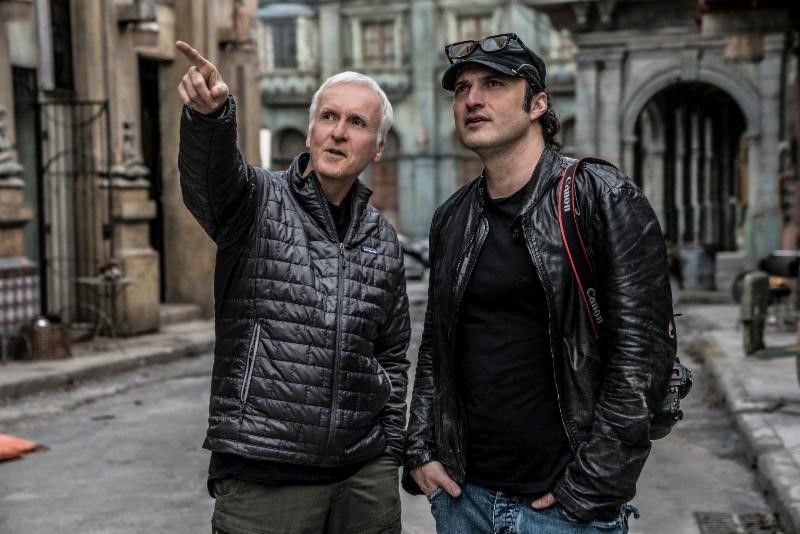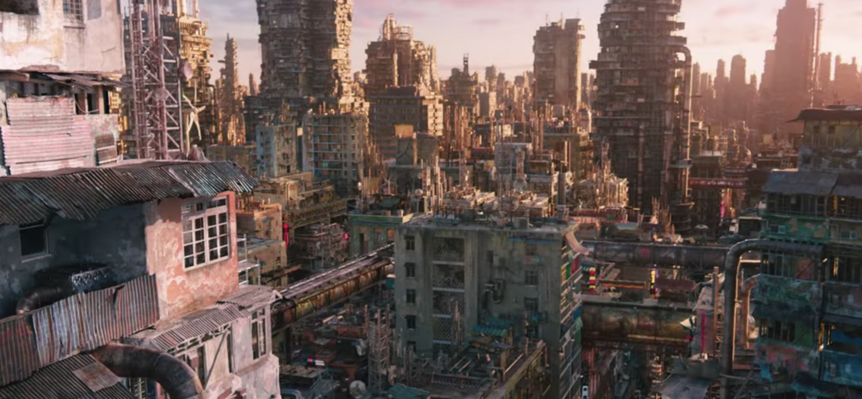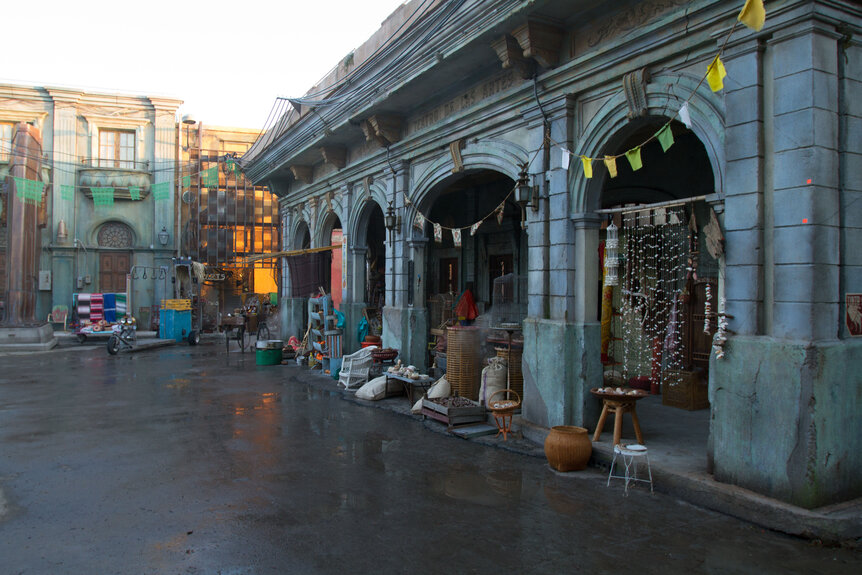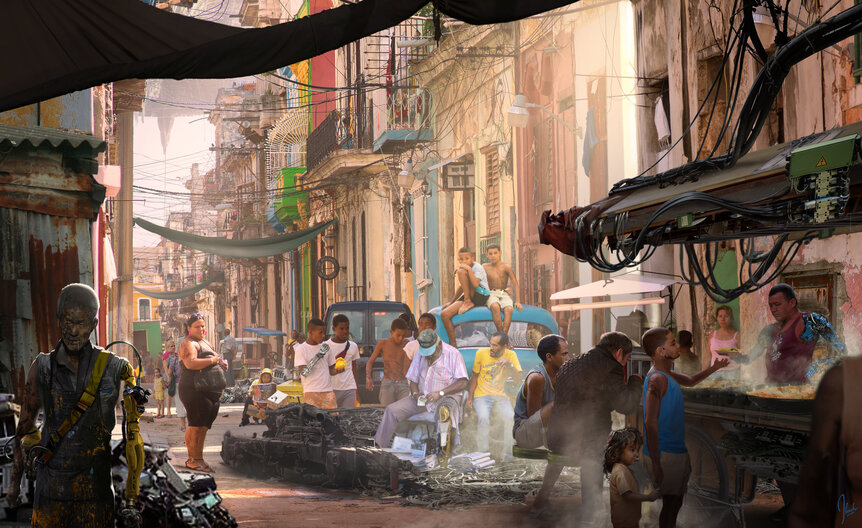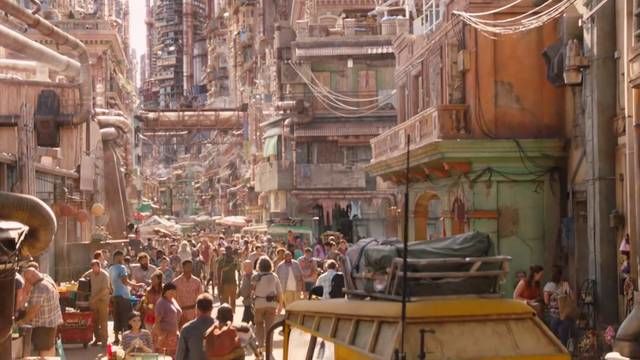Create a free profile to get unlimited access to exclusive videos, sweepstakes, and more!
Why Alita: Battle Angel was set in Latin America and used so many 3D printers
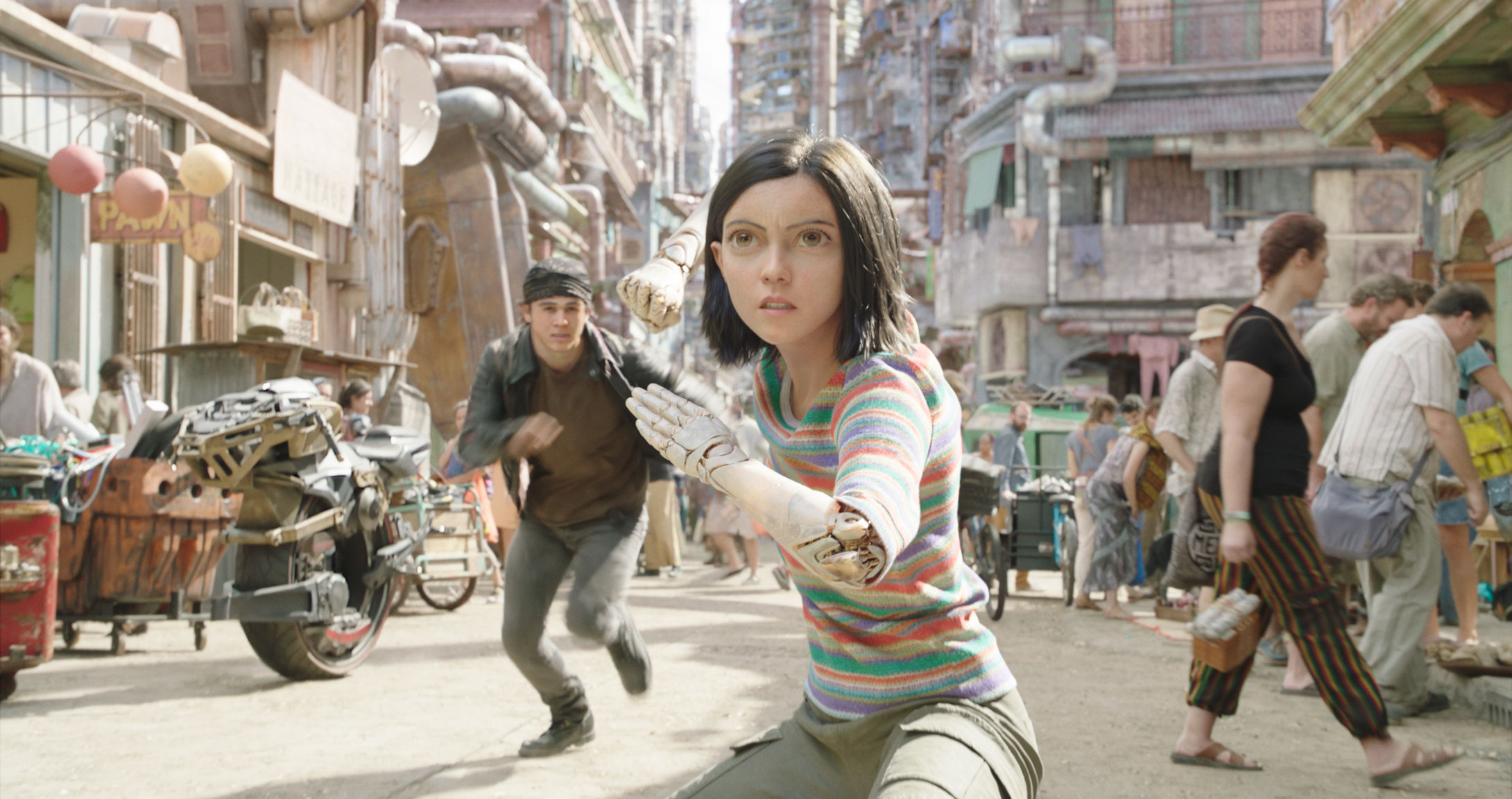
Over the course its five-year run in the early '90s on the pages of Business Jump magazine, Yukito Kishiro's Battle Angel Alita became one of Japan's definitive cyberpunk manga. Along with comics and shows such as Akira and Cowboy Bebop, Alita (know locally as Gunnm) was at the center of a wave of stories that reached audiences worldwide but were uniquely Japanese. Now, after nearly a decade and a half of start-and-stop development, a big-screen adaptation directed by Robert Rodriguez (and called Alita: Battle Angel) is finally ready to hit the big screen — and it's set in a future Central America, with production design largely inspired by Latin American cities.
So, what happened? James Cameron — and science — happened.
Cameron first optioned the property in the late '90s, intending to make it his next sci-fi epic. Obviously, there were some delays. Once he began development on the movie in the mid-aughts, Cameron decided to make a future-set dystopian story about a cyborg warrior girl as realistic as possible. And the man is serious about realism in sci-fi — just look at his comments about Aquaman and its underwater fantasy world.
"What we've tried to do in our films, in general, is create our own science fact," Jon Landau, Cameron's longtime creative partner and a producer on Alita, tells SYFY WIRE. "It doesn't have to be fact in our world, but it has to be fact in the way we present it and how we set it up and how we establish it."
By 2015, Cameron had decided that he wouldn't have time to direct Alita, so he went in search of directors who had a similar vision and the wherewithal to produce the large and detailed world he had imagined. At a meeting with Robert Rodriguez and his crew at Troublemaker Studios in Texas, Cameron laid out a decade's worth of development material, including notes on its speculative hard science. Co-production designer Steve Joyner estimates there were about 200 drawings of vignettes based on the source material, as well as a very thick stack of single-spaced notes; Joyner remembers reading about 30 or 40 pages of them.
For Alita, assuring realism meant digging into the physics of its sci-fi city and the ominous spaceship that hovers over it. The ship and its own onboard city, known as Zalem, is connected to Iron City, the vertical scrap heap of a metropolis that rises beneath it, by long metal tubes. Cameron zoomed in on the fact that Zalem was the remains of a space elevator, which led him to notes from the king of hard science fiction.
"One of the things that stood out right away was that the city of Zalem was the remains of a space elevator," Joyner says. "And referencing Fountains of Paradise by Arthur C. Clarke, such a thing would need to be on the equator to work properly. And so immediately we thought, oh, this is a great crossover. We need layers of the old world with a new world built on top."
Troublemaker Studios is based in Austin, and Rodriguez had already shot multiple movies in Mexico, so his team was well acquainted with that area of the world. Of all the potential filming locations near the equator, it was the obvious choice. For context, in the manga Iron City is technically in Kansas (though it still has a Japanese cyberpunk look).
As they began sketching out and designing their Iron City, Rodriguez, Joyner, and co-production designer Caylah Eddleblute tapped into visits to Mexico City and San Miguel de Allende, a colorful World Heritage site that dates back to colonial times. Eddleblute also lists "Jaral de Barrio, which has at its center a sprawling aging hacienda," as a major influence.
"I related Iron City’s core to the alleys and tunnels of Guanajuato," she added.
Another major reference point was including Cuba's weathered, frozen-in-time 1950s aesthetic. The team studied Robert Polidori's seminal photo essays on Havana, noting the grand architecture that was slowly decaying. According to Eddleblute, Cameron was also intent on including notes of Kowloon, Hong Kong, with its famous vertical city slums serving as a reference for the poor parts of Iron City.
But no location was more formative than Panama City, which served as both the precise coordinates of Cameron's ground zero for the space elevator and the prime inspiration for Iron City's layout. A modern city that has been built and rebuilt several times by different moneyed interests, it provided a cross-section that was useful for designing a stratified city that had both the remains of a bombed-out past and future made from both sleek steel and cobbled-together parts.
"There's a specific structure to that city," Eddleblute says. "It has old city ruins that are centuries old and made of stone, it has the classic colonial Latin American architecture as another city section, and another layer has the more utilitarian, hard-edged functioning kind of neighborhoods, where the income isn't as great, the environment is much more lean and austere. We have each of those kinds of neighborhoods in the Iron City we created."
They even thought about filming in Panama City and its old colonial district, Casco Viejo, but the demands of a motion-capture protagonist (played by Rosa Salazar) and heavy visual effects made that largely impractical. Instead, they took the lessons they learned from each of the international cities and built their own used-future metropolis on a studio lot in Austin that stretched over 60,000 square feet.
They carefully studied the way the plaster chipped off buildings in Havana and Panama City and how layers of paint represented the passage of time; projected how future technology might be draped over half-ruins. Thus began the arduous task of fleshing out the sparse details given by the manga.
"One of the things that Robert insists on that makes things seem real is depth. So all of the doors opened up on the backlot — they weren't just flat facades," Joyner says. "We created the interiors, so when you drive by, you get a glimpse of that second and third layer inside the buildings where people would set up shops and rooms for rent and various things where they manufactured stuff. We had a foundry in a forge where a guy was working, we had a glass-blowing thing, we had vendors making food. It really brought the city to life."
To fill the massive city with so many tangible props, Troublemaker had five 3D printers humming before and during production. They were fabricating everything from tiny objects to large facades to add life to the teeming city of humble merchants, bounty hunter cyborgs, with a special focus on the everyday minutiae that is only fully appreciated when absent.
"I pulled countless photos of reference of people standing in doorways of shops, hanging out in that way that you see in other countries in the little storefronts with all the tables hanging out about," Eddleblute says. "We had a huge team of welders and we created all kinds of elements to help create shadow patterns and light patterns, which add a sense of tension and drama to a scene. That was a huge, huge element. Lots of balconies, lots of grating."
In total, Joyner says the team at Troublemaker used "480,000 pounds of plaster, concrete, and stucco, all of which was hand-applied" to build the sets in the Austin soundstage. It was probably the largest practical build of their careers, he said, and set decorator David Hack brought in even more materials, used tech raided from an aerospace graveyard in San Antonio. For a story originally created in Japan, the Southwest wound up being a perfect new location.
